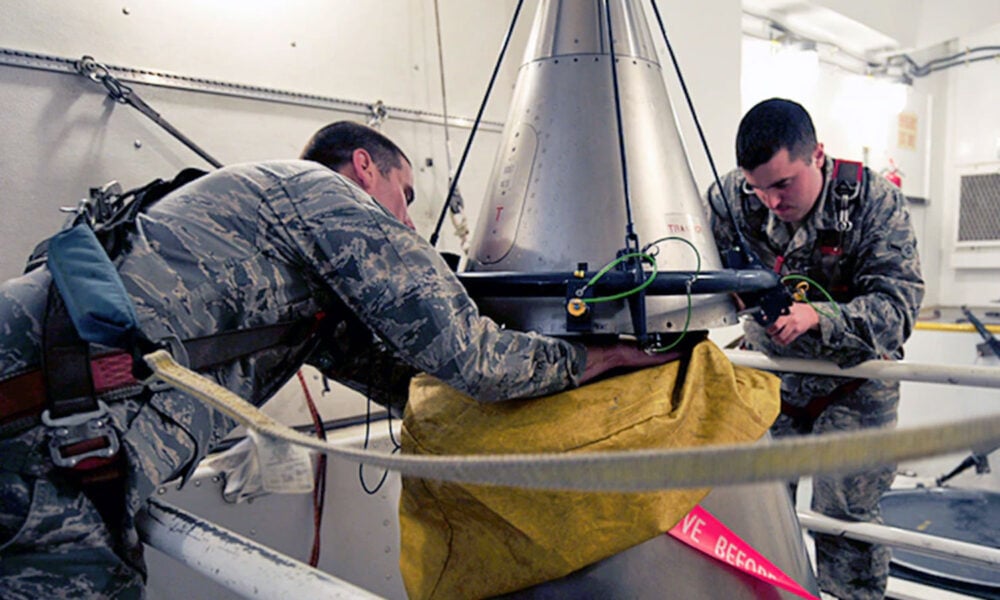Last week, Russia announced that it would temporarily suspend inspections under the New Strategic Arms Reduction Treaty (New START)—the last remaining nuclear arms control treaty between the United States and Russia. New START is the latest in a series of treaties that for the past three decades have allowed major reductions in US and Russian nuclear arsenals—from more than 10,000 to the current limit of 1,550 deployed long-range strategic weapons each. These treaties have enhanced US security not only through the reduction in numbers but, equally importantly, through the valuable information about Russia’s nuclear arsenal and the predictability and stability in the US-Russia strategic relationship that they provide.
Russia cited flight and visa restrictions imposed by the US in response to Russia’s invasion of Ukraine that have made it difficult to carry out its own inspections of US nuclear arms as the reason for this suspension. Russia’s move endangers the New START treaty and further exacerbates Russia’s already tense—and steadily worsening–relationship with the US. Rather than undermining the few avenues that remain to keep nuclear competition in check, both sides need to return to dialogue now to head off a nascent arms race that could be every bit as dangerous as the low points of the Cold War.
What’s really going on?
A Russian Foreign Ministry statement said that the US restrictions have given the US “unilateral advantages,” and “effectively deprive the Russian Federation of the right to conduct inspections on American territory.” Russia’s explanation is disingenuous: exceptions to sanctions that restrict Russian flights in US airspace and visas for Russian citizens can be made for special circumstances, and fulfilling treaty obligations could clearly count as such.
So what is really going on? New START inspections have been on hold since 2020 due to Covid-19, but the United States recently notified Russia that it intended to resume inspections. Russian Deputy Foreign Minister Sergei Rybakov said that Russia received notice that the US wanted to conduct an inspection “in the nearest days,” and that this is what triggered the suspension. This explanation makes more sense than blaming the decision on sanctions (although Russia is surely annoyed about those and happy to take any opportunity to paint them, and the US, as unreasonable). Facing the sudden prospect of inspectors arriving possibly within days, Russia may be concerned about the US having access to its military facilities during the ongoing invasion of Ukraine, particularly given US support for Ukraine.
Suspending inspections is not good for anyone
Whatever the reason for Russia’s announcement, suspending inspections is wrong-headed and counterproductive. The inclusion of robust inspection measures was one of the key triumphs of New START. Such inspections allow both sides to verify information that their adversary provides and to feel confident that their assessment of their adversary’s arsenal is accurate.
While all countries would prefer to keep their own military capabilities secret and unconstrained, they also prefer that the capabilities of their adversaries be known and constrained. During the Cold War, politicians and military leaders on both sides recognized that giving up some secrecy in exchange for transparency and verifiable information was beneficial to all. This is why US military leaders strongly supported New START. Air Force General John Hyten, responsible for US nuclear forces as head of US Strategic Command at the time, told Congress he was “a big supporter” of the treaty because “when it comes to nuclear weapons and nuclear capabilities…bilateral, verifiable arms control agreements are essential to our ability to provide an effective deterrent.”
New START was already in danger, but the US and Russia are just pointing fingers
Given the security benefits of bilateral, verifiable treaties, it is deeply troubling that the US and Russia seem to be on a path to letting the treaty expire with no replacement, but that is the situation we are heading for right now.
New START took effect in 2011 and was set to expire in February 2021, but included a one-time option to extend the treaty for five years by presidential agreement. When the Biden administration took office in January 2021, they quickly reached such a deal with Russian President Putin. The extension leaves New START in place until February 2026—a date that is quickly approaching—and gives the US and Russia time to negotiate a replacement for the treaty.
In a recent statement ahead of a review conference for the multilateral Nuclear Nonproliferation Treaty, President Biden said that the US was ready to “expeditiously” negotiate a framework to replace New START. However, he noted, “negotiation requires a willing partner operating in good faith,” saying that Russia’s attack on Ukraine shows its disregard for international law and that Russia needs to show that it is ready to resume negotiations on these issues. Clearly, Russia’s latest move on New START has done the opposite.
Russia, for its part, puts responsibility for the break in dialogue on the US, saying that the Biden administration withdrew from scheduled talks on strategic stability—intended as a first step toward treaty negotiations—because of the Ukraine war. A Kremlin spokesperson told reporters, in response to Biden’s statement, that “Moscow has repeatedly talked about the need to start such negotiations as soon as possible because there is little time left,” saying that if the treaty expires with no replacement “it will have the most negative impact on world security and stability.”
It might still be possible for the two presidents to reach an executive agreement to further extend New START if time runs out to negotiate a new treaty. This would avoid the need to involve the US Senate, which is otherwise likely to be a significant obstacle in the current highly charged and highly partisan atmosphere in Washington. Russia, however, might insist on a treaty, assessing that this would be more durable and less subject to the whims of a future US president. At present, however, it is a moot point; no negotiations of any kind are taking place and each side blames the other for this fact.
This is about more than a single treaty
New START is the only remaining treaty limiting US and Russia nuclear arsenals. Without a new agreement, it is quite possible that 2026 will see both sides moving toward more than the 1,550 deployed long-range nuclear warheads and 700 deployed delivery vehicles allowed by the treaty. This would be a major reversal of decades of progress in cutting nuclear arsenals and would exacerbate what already appears to be an incipient arms race involving not only the US and Russia, but also China.
The difficulties over New START, however, are also symptomatic of a much larger deterioration of the US-Russia relationship and of the status of nuclear arms control worldwide. US-Russia relations were tense and getting worse even before Russia’s invasion of Ukraine. Over the past two decades, the US has pulled out of several arms control treaties that were key to maintaining nuclear stability, beginning with President George W. Bush’s decision to leave the Anti-Ballistic Missile Treaty in 2002 and more recently including President Trump’s withdrawal from the Intermediate-Range Nuclear Forces Treaty in 2019 and the Open Skies Treaty in 2020 (Russia withdrew in 2021). While the expiration of New START is not quite the same—the US and Russia in this case are simply refusing to apply lifesaving measures rather than directly causing its death—the treaty still appears likely to be the next casualty.
For its part, Russia invaded the Crimea region of Ukraine in 2014 and in 2018 President Putin announced the development of several new types of nuclear weapons intended to overcome US missile defenses. The Ukraine war has now served to further heighten tensions, leading to fears of a nuclear standoff between Russia and NATO, a situation that has not been seen since the end of the Cold War. Russia’s use of nuclear blackmail—using the threat of nuclear weapons to deter NATO intervention in the conflict—is a troubling new development that may make the current situation even more dangerous than those historical standoffs.
Too much to lose
While Russia’s unprovoked aggression against Ukraine is inexcusable and must be condemned in the strongest terms, Russia and the US both share blame for the current sorry state of arms control. In the US case, increasing partisanship has led the most recent Republican administrations—whose party in the past can claim credit for some of the major treaties and cuts in nuclear weapons—to instead attack the entire idea of arms control and pull out of the very treaties that their predecessors proposed and signed. The ABM Treaty was signed by President Richard Nixon in 1972, the INF Treaty by President Reagan in 1987, and the Open Skies Treaty by President George H.W. Bush in 1992 after the idea was initially conceived of by President Eisenhower in the 1950s.
But cutting off dialogue and pointing fingers only makes a bad situation worse. Both sides must take steps to get back on track, even in the midst of the ongoing war in Ukraine. Most immediately, that means Russia must agree to resume New START inspections. The next step is for both sides to return to talks on strategic stability and a follow-on agreement for when New START expires. There is too much to lose—for us all—to allow decades of progress on nuclear arms control and reductions to go to waste.

